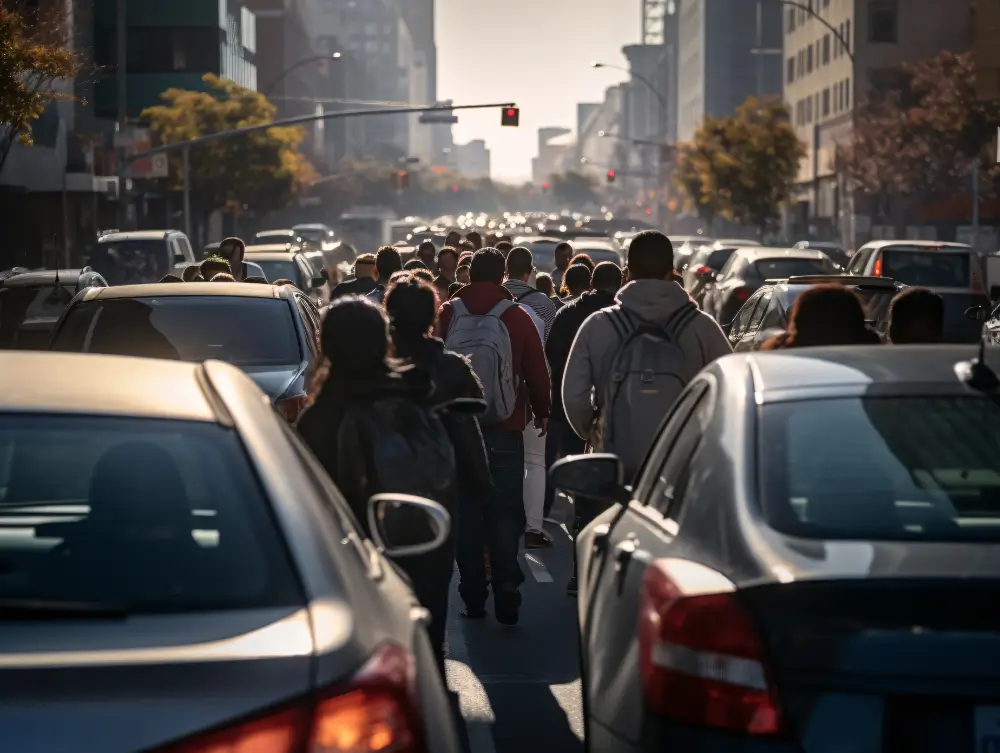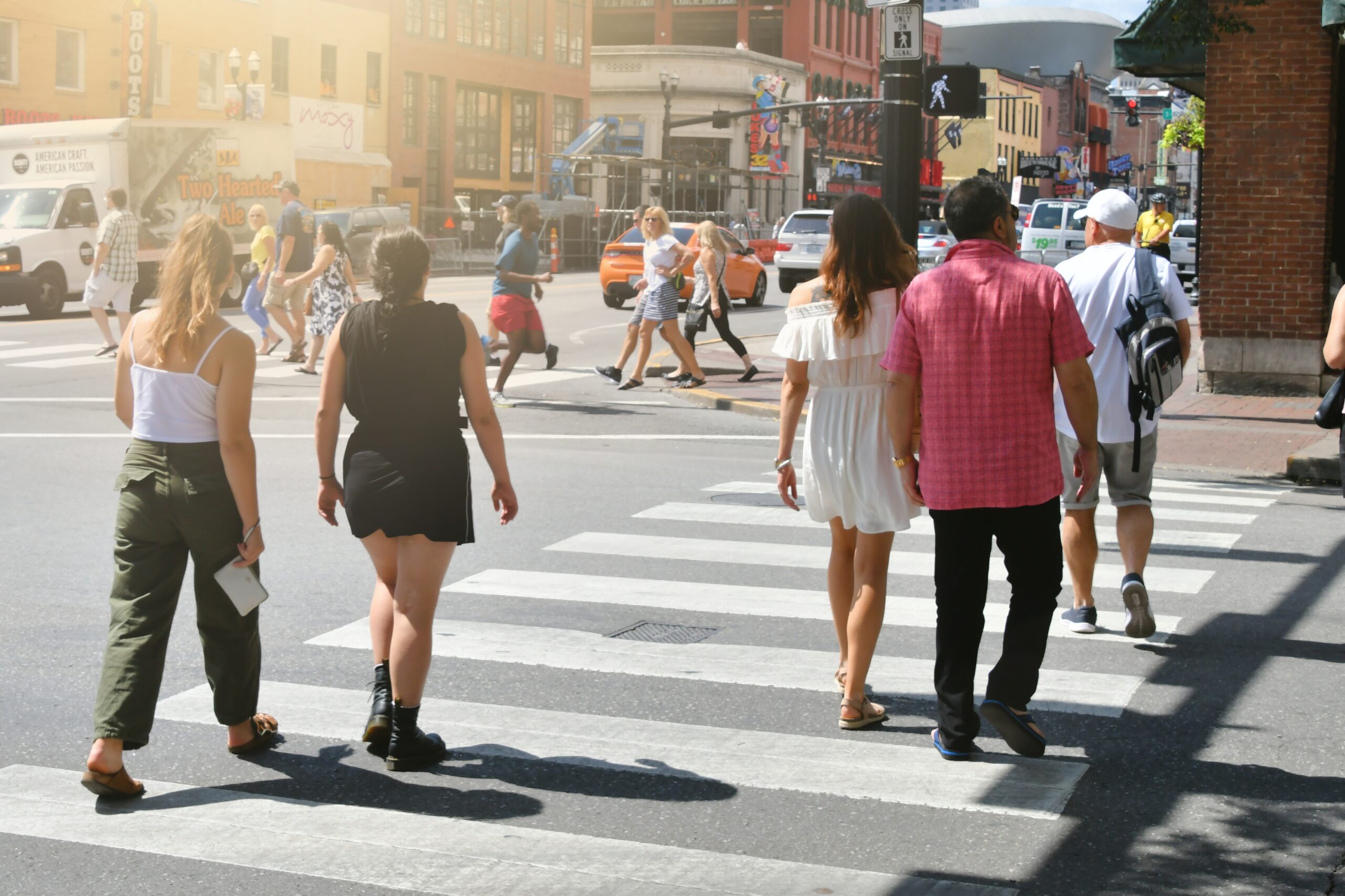The idea of the Vision Zero program is to prevent all traffic fatalities and eliminate serious injuries or complications for people involved in road accidents and collisions. Built on the principle that basic is unacceptable to lose human lives on roads, Vision Zero advocates for a structures change employing civil engineering, enforcement, public awareness, and emergency response.
With Pledge to Zero, people around the world and communities of practice are embracing safer streets and refuting the belief that crashes are unavoidable. This is more than a vision statement; it’s an ambitious plan that involves all levels of transport governments, professionals, local authorities, and the public in the transformation.
The Role of Public Campaign in Promoting Vision Zero
In fact, public campaigns are the fundamental means of addressing the Vision Zero message to the general public. These are social marketing campaigns to create awareness to the populace, government, and other stakeholders on; the need for road safety, the dangers associated with reckless behavior, and measures put in place to enhance safe roads. Thus, emotive appeals, clear text and imagery make public campaigns, which stress that road safety is an issue of collective concern. These efforts use Facebook, television, radio, and fairs to make every driver, cyclist, and pedestrian understand the need for safer roads.
Maximizing the usage of media to expand Vision Zero drives
It will be seen that media coverage is one of the most important factors in enhancing the work of Vision Zero. This way, the media can remain relevant with statistics, stories of success and lessons to be learnt from roads and traffic incidences.
Appearing on national television, local news and other digital platforms contributes towards enhancing awareness on important campaigns such as speeding, impaired driving and distracted driving. By maintaining regular media presence, Vision Zero can spread its awareness and garner support for the policies that are needed throughout the community.
At the same time, media channels themselves can be sources of good examples, where cities and communities explain how they are gradually working to minimize traffic accidents.
Stakeholders’ Engagement for Vision Zero Course
Vision Zero can only be attained through cooperation of different actors. Many stakeholders in the transport sector, in government, enforcement agencies, non-governmental organizations, as well as community-based organizations must work together to create and enforce interventions. Consultation with stakeholders is a useful practice for defining policies, as well as designing projects that address concrete aspects of traffic safety.
This approach is more effective than when only one stakeholder champion’s the change, as it forms a united front. Stakeholder management includes communication, trust and work towards Vision Zero principles in planning and implementing local, state, and national transportation policies.
Strategic Stakeholder Engagement in Vision Zero: Best Practices
The role of Public-Private Partnership in raising capacity
The findings of this research suggest that PPPs are critical to financing road safety interventions under Vision Zero. The private sector brings important assets and good practices into the partnership, including technology companies, insurance firms, automobile manufacturers, etc., can be significant sources of support to implement safety features such as smart ITS or AV technology.
CIS
Local communities have to be the focus of Vision Zero initiatives. Community members’ participation in planning and executing safety measures makes the measures adopted appropriate and efficient. This may be school based campaigns, road infrastructures such as speed humps and bumpons, and support groups within a given community pushing for change.
Effects of education and Awareness on Road Safety
Education remains a critical component in Vision Zero since it determines car use on the road. Through presenting to the public possible dangers of unsafe driving behavior including excessive speed, driving under influence, and distracted driving, campaigns can lead to a change of the behavior of people. Schools and workplace; and local institutions can also have a significant role to offer information on road safety education. Television commercials, Internet classes, computer games, and applications are the most suitable ways of addressing different age groups, particularly young drivers, about the outcomes of reckless driving.
Digital Platforms and Social Media in Promoting Vision Zero
In the current world where social media is in existence and most frequently used, social media accounts such as Twitter, Instagram, and Facebook are key assets in disseminating Vision Zero. These platforms enable organisations directly reach out to a youthful and ICT proficient society through creating awareness via posts that include infographs, videos, and challenges. Some of the most used havehs include #VisionZero #ZeroDeaths and #RoadSafety to market the initiative around the world. In addition, social media means that citizens can call for safer roads where they live, this creates unity and people act as one. It also makes use of target ads and geo-tagging to also send safety messages where the traffic accidents frequently occur.
Safe and Creative Road Safety Advertising and Promotion
They are one of the strongest assets in the field of attracting attention and enforcing the ideas of Vision Zero. Worthy billboards, strong digital banners, and other highly visible road signs with statistical information on traffic accidents and fatalities may be used as daily messages. These visuals alongside basic, yet poignant, messages of the human cost of road crashes assist in underlining the need for Vision Zero. Moreover, collaborations with graphic designers and digital artists can help bring some inspiration and fresh vibes to campaigns so that they pop out among all the mediocrity. Similar innovative advertisement creates a sense of the scramble while at the same time ensuring that a major goal of road safety is always foremost.
With a focus on Policy Advocacy and Vision Zero
The most effective method of promoting Vision Zero is policy advocacy Since the establishment of Vision Zero, this has turned out to be one of the most effective ways of promoting this message. There is a need for the strong policy change to make sure that Vision Zero principles become part of nation and regional transport laws. Being in support of issues like lower speed limits, higher penalties for distracted driving and seat belt usage all help in achieving the broader goal of road safety. Attempting to persuade decision makers to fund safe infrastructure such as visible crossings, bike lanes and pedestrian signals ensures that Vision Zero is backed by long term solutions.
Relationship Between Federal and Non-profit Agencies
Stakeholder partnerships are crucial for Vision Zero since government departments and non-profit organisations need to work together. Specialized non-profit organizations can help with the provision of research, statistics, and advocacy support for campaigns that will help shape the public policies needed to reduce death on the roads. They also have informed public and increase awareness of the disease and its prevention in underserved/ high-risk populations. When non-profits support the government, more people are informed and encouraged to support the cause and promote or advocate better and larger safety legalizations and programs.

Evaluating the Impact of Vision Zero Advertising
Measuring the impact of Vision Zero marketing campaigns is therefore very important in order to determine whether the goals of Vision Zero are being met. They include collection of information on traffic death rates, monitoring of change in behavior patterns and observation of opinions from the public. Such things as traffic cameras, accident statistics, and surveys are usable in supporting the understanding of how the public is receiving the safety messages and interventions. Through such assessments, it becomes possible for the stakeholders to adapt to the new circumstances, adapt new solutions, and guarantee that the Vision Zero initiative is on the right track.
Lets Wrap Up!
The key to Vision Zero is the achievement of a road network without fatalities or serious injuries. Promoting road safety for all has long been a worthy goal, but with greater public awareness, powerful media coverage and dedicated stakeholders, this lofty goal has the power to positively alter the perception that society has towards road safety.
Adding education, digital initiatives, and good policy, communities can create cultures and environments where everyone’s life is valued. As much as the journey to Vision Zero is long, every journey taken towards the reduction of the road fatalities is a journey closer to a future, where families do not have to endure the loss of their loved ones due to preventable roads accidents.



